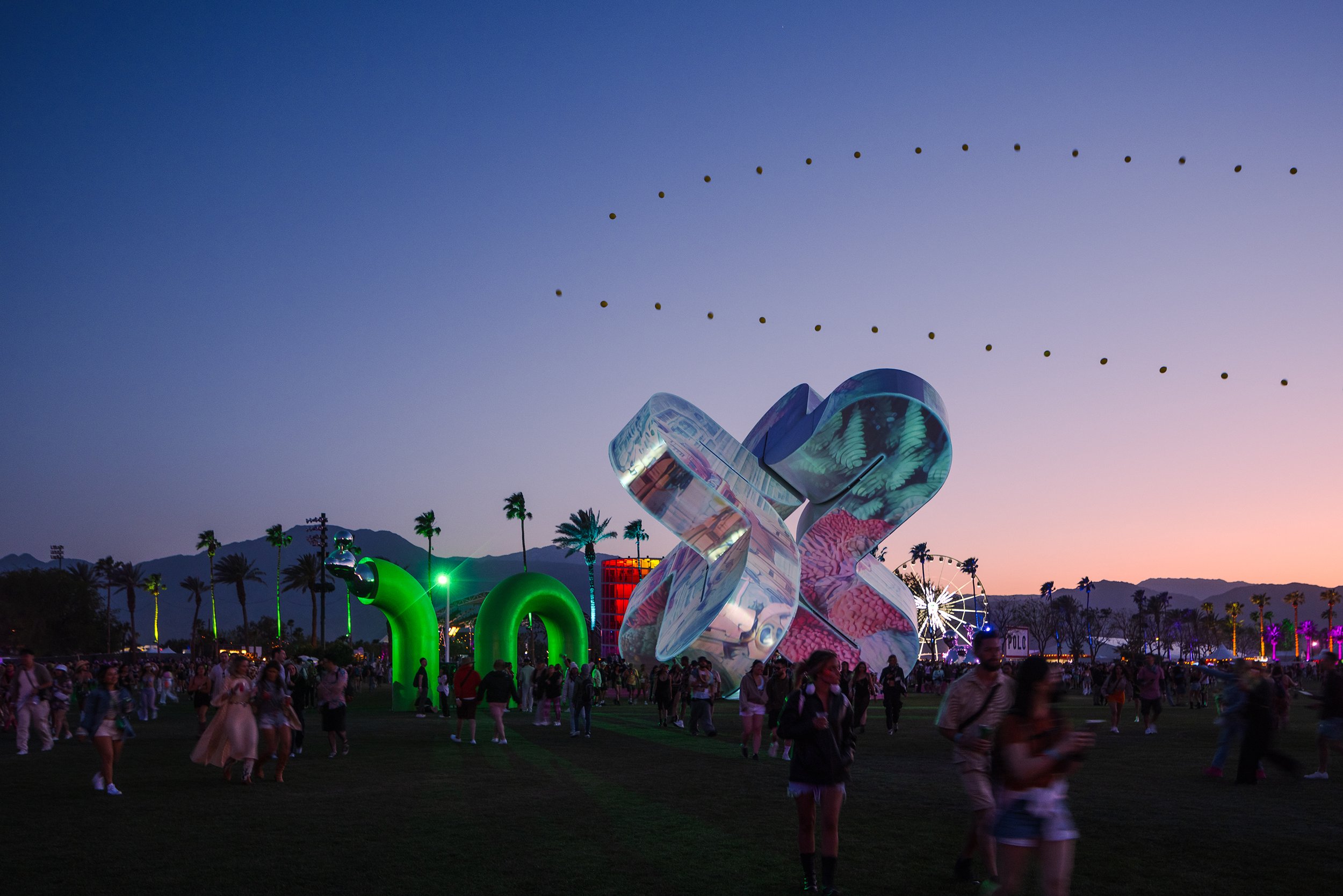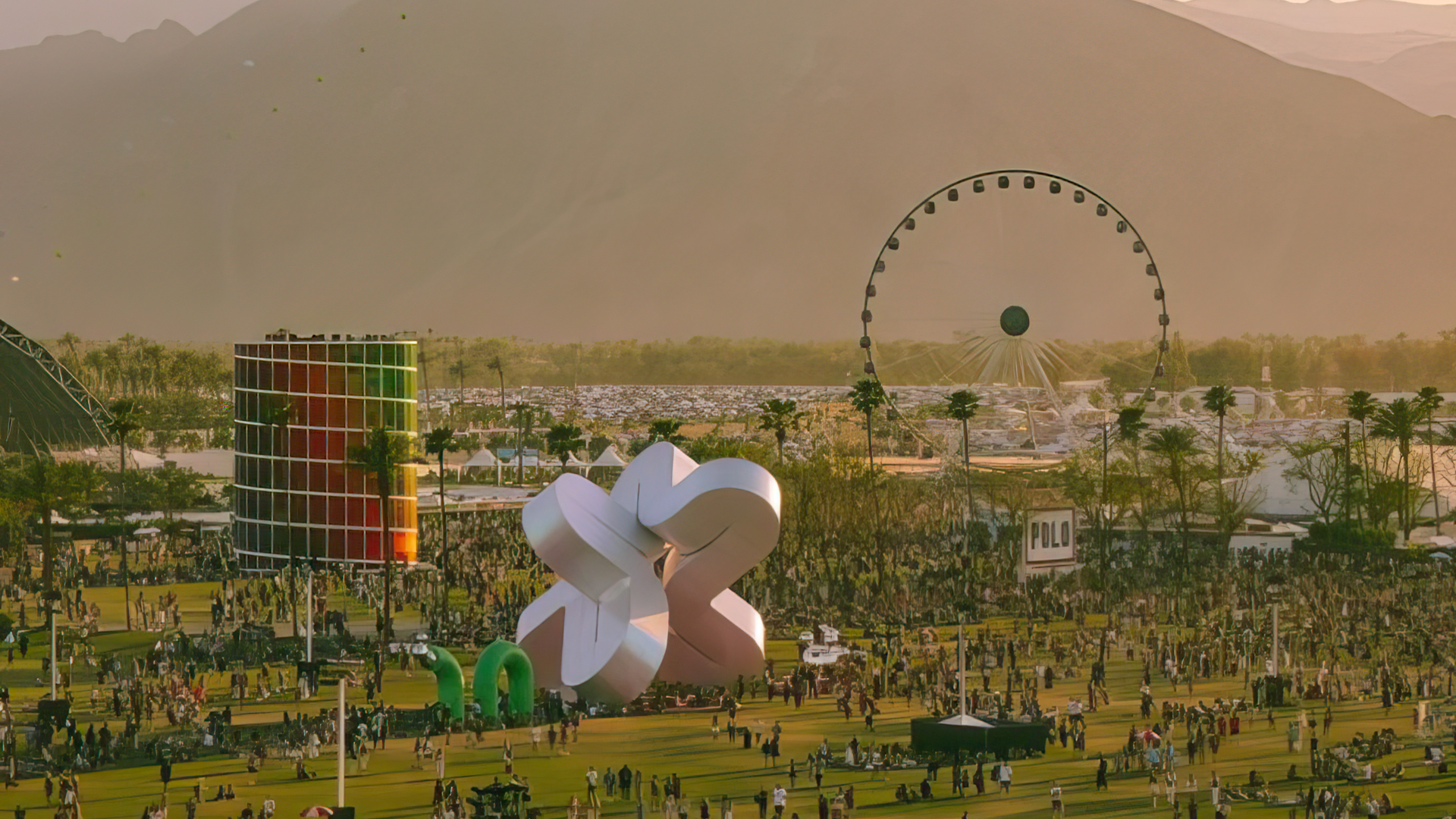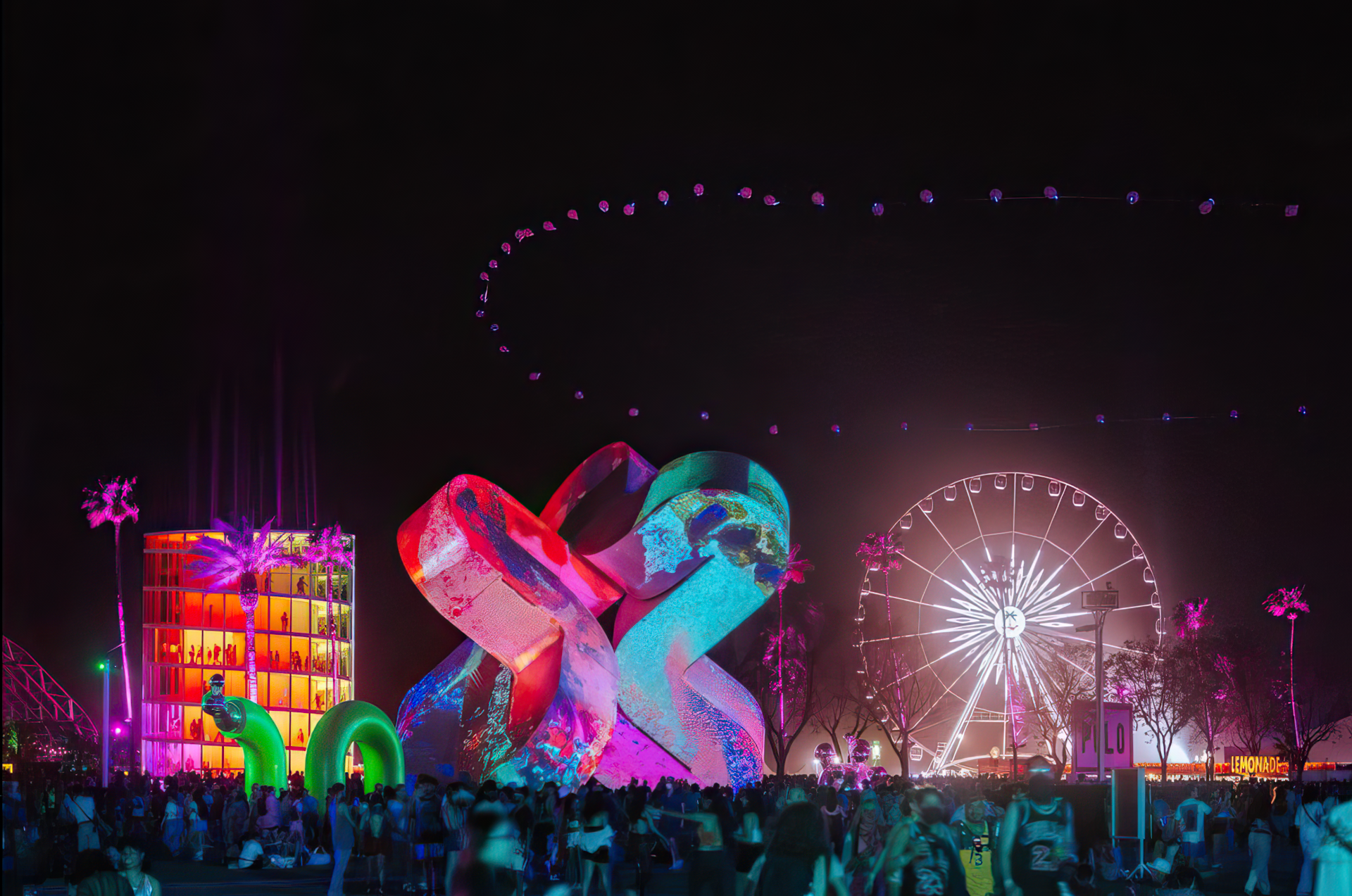













HOLOFLUX
Year: 2023
Location: Indio, California
Client: Coachella
There’s a technological trajectory for how we capture and document reality. It all starts with reflection. Humans first experience with capturing and broadcasting the world was seeing their own reflection on water. And that is perhaps the moment that confirmed their self awareness. Therefore I believe that this notion of media, or the intent to capture reality, is intrinsic to our being and our consciousness. Perhaps the first technology to broadcast reality is the mirror. Photography and film is an evolution on the mirror, it allows us to store and archive this capturing of reality. That’s why I’m interested in how optical and media technologies can call into question the material status, or the truth of an object. Was it there? Is it only there because we captured its presence through media in a particular time? Or we are no longer interested in documenting the world as is but more interested in occupying our imagined realities? Experiencing our stories. And now, with rapid production of photorealistic images through AI, the tension between truth and presence has never been so contested. Holoflux is really about this very relationship between reality and media. By creating an ecosystem of effects through architecture, projection and augmented reality, it creates a new kind of space at the threshold of the material and the imagined. By animating and augmenting a 3 dimensional architectural object, it aims to break the boundaries of the frame that we are so used to experiencing in all our devices. It makes turns imagination into a bodily experience.
In Holoflux, Digital simulation, broadcast camera technology, virtual production, extended reality and AI are all in the mix. They engage with the piece in different ways throughout the day and through different mediums.
The sculpture appears as an enigmatic object from a distance and becomes architecture as you approach: You can walk underneath and around the artwork, and the shimmering iridescent surfaces optically play with our perceptions of three-dimensionality.
Meanwhile in a parallel digital world, waiting to be revealed, an augmented reality overlay situates the physical sculpture as a fragment of a much larger virtual ecosystem of forms in motion.
At sunset, projections of real-time video broadcasting the festival atmosphere create a surreal effect in which the sculpture appears to become invisible. I always wanted to make architecture disappear, de-materialize it,question its presence, permanence. This threshold of simulation and materiality is an ongoing theme I’m exploring in my work.
At night, Holoflux becomes a hyperobject with lively projections, graphics, and changing color schemes that cycle through different identities. It becomes an architectural digital opera of ever-changing forms, effects and experiences.
What’s the relationship between truth and reality? Truth is political, it requires consensus. Art is one of the tools for us to reach that consensus. Through the proliferation of photography and film as artistic mediums, documentation of reality has become more ambiguous. And now with generative AI, the tension between truth and presence has never been so contested. Technology has become a storytelling device. Meanwhile What’s incredible about AI is that, by building upon our collective and historical construction of reality, It generates new ways of seeing the world, forging unexpected connections that we haven’t encountered in our memory. That’s what Holoflux is really aiming to explore critically, this contentious bond between reality and storytelling, and our collective construction of fictions through technology. By augmenting an architectural object, it aims to break the boundaries of the frame that confines images. It turns imagination into a bodily experience, it turns it into architecture.
